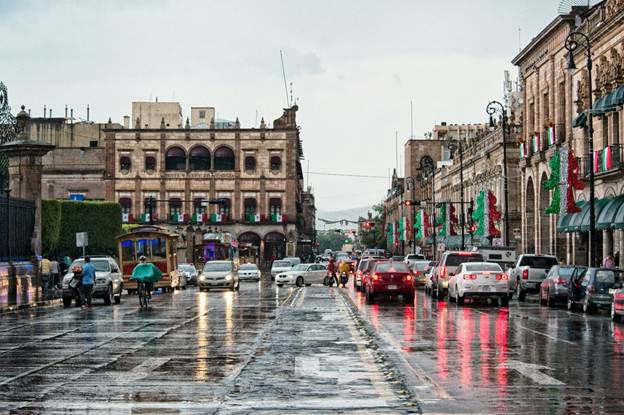
Climate and Geography
Mexico’s climate is remarkably diverse, a reflection of its expansive geography that spans from the arid deserts of the north to the lush rainforests of the south. This diversity is influenced by factors such as latitude, altitude, ocean currents, and topographical variations, resulting in a mosaic of climatic zones across the country.
In the northern regions, the climate is predominantly arid and semi-arid. Deserts like the Sonoran and Chihuahuan experience hot temperatures during the day and cooler nights, with minimal rainfall throughout the year. These areas are characterized by sparse vegetation and significant temperature fluctuations between day and night, a typical feature of desert climates.
Moving towards the central highlands, the climate becomes more temperate due to higher elevations. Cities like Mexico City and Guadalajara enjoy mild temperatures year-round, with warm summers and cool winters. The altitude moderates the heat that would otherwise be expected at these latitudes, creating a pleasant environment often referred to as “eternal spring.”
The coastal plains along the Gulf of Mexico and the Pacific Ocean exhibit tropical and subtropical climates. These regions are generally warm and humid, with significant rainfall, especially during the summer months. The state of Veracruz on the Gulf coast, for instance, experiences a hot and humid climate with abundant rainfall, supporting rich vegetation and diverse ecosystems.
In the Yucatán Peninsula, the climate is distinctly tropical. High temperatures and humidity are common, and the region experiences a pronounced rainy season from May to October. The area is also susceptible to hurricanes during late summer and early autumn, which can bring heavy rains and strong winds.
The southern states, such as Chiapas and Oaxaca, feature lush rainforests and cloud forests due to their tropical climates with heavy rainfall. These regions are some of the most biodiverse in the country, supported by the warm temperatures and abundant moisture.
Mountainous areas, including the Sierra Madre ranges, present cooler climates that can vary dramatically with elevation. Higher altitudes bring lower temperatures, and some peaks are high enough to receive snowfall during the winter months. This alpine climate supports different flora and fauna compared to the surrounding lowlands.
The Baja California Peninsula in the northwest exhibits a unique Mediterranean climate in some areas, particularly around the city of Ensenada. Mild, wet winters and hot, dry summers are characteristic of this region, which supports vineyards and agriculture suited to these conditions.
Ocean currents play a significant role in influencing Mexico’s coastal climates. The Pacific coast benefits from the California Current, which brings cooler temperatures and less humidity compared to the Gulf coast. Conversely, the Gulf of Mexico and the Caribbean Sea contribute warm currents that increase humidity and precipitation on the eastern coasts.
Seasonal variations are also notable in Mexico’s climate. The country generally experiences a rainy season (May to October) and a dry season (November to April). During the rainy season, many regions receive the majority of their annual precipitation, which can lead to lush landscapes and, occasionally, to flooding. The dry season brings less rainfall and cooler temperatures, particularly in the interior and northern regions.
Microclimates are present throughout Mexico due to its varied topography. Small changes in elevation or proximity to bodies of water can result in significant climatic differences over short distances. This contributes to the country’s rich agricultural diversity, allowing for the cultivation of a wide range of crops from tropical fruits to temperate vegetables.
Understanding the varied climate of Mexico is essential for appreciating its ecological diversity and the lifestyles of its inhabitants. The country’s climates influence agriculture, urban planning, tourism, and daily life, reflecting a deep connection between the natural environment and cultural practices. Whether it’s the cool highlands, the warm beaches, or the arid deserts, Mexico’s climatic variety offers something for everyone, making it a unique and inviting destination.
Mexico, a nation rich in history, culture, and natural beauty, offers a vibrant and diverse lifestyle that has captivated the hearts of many expatriates . . .












